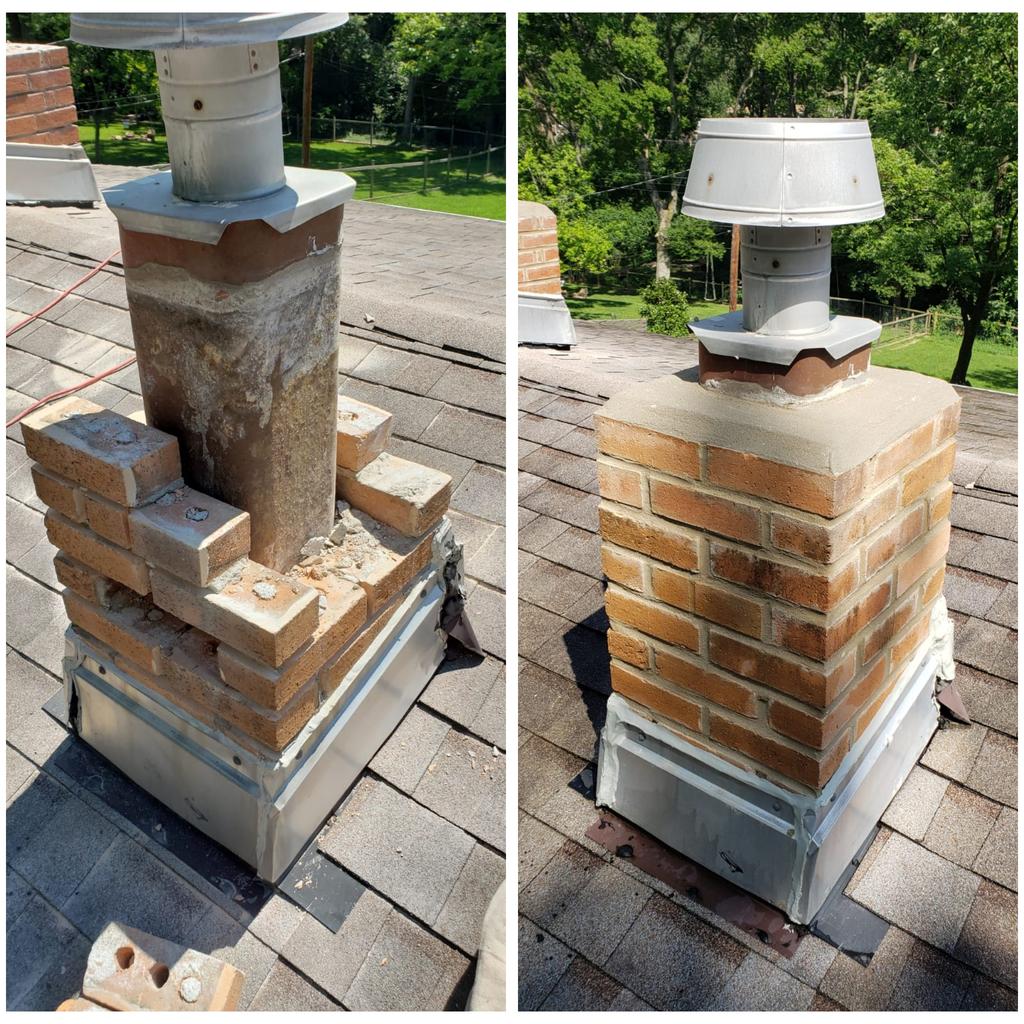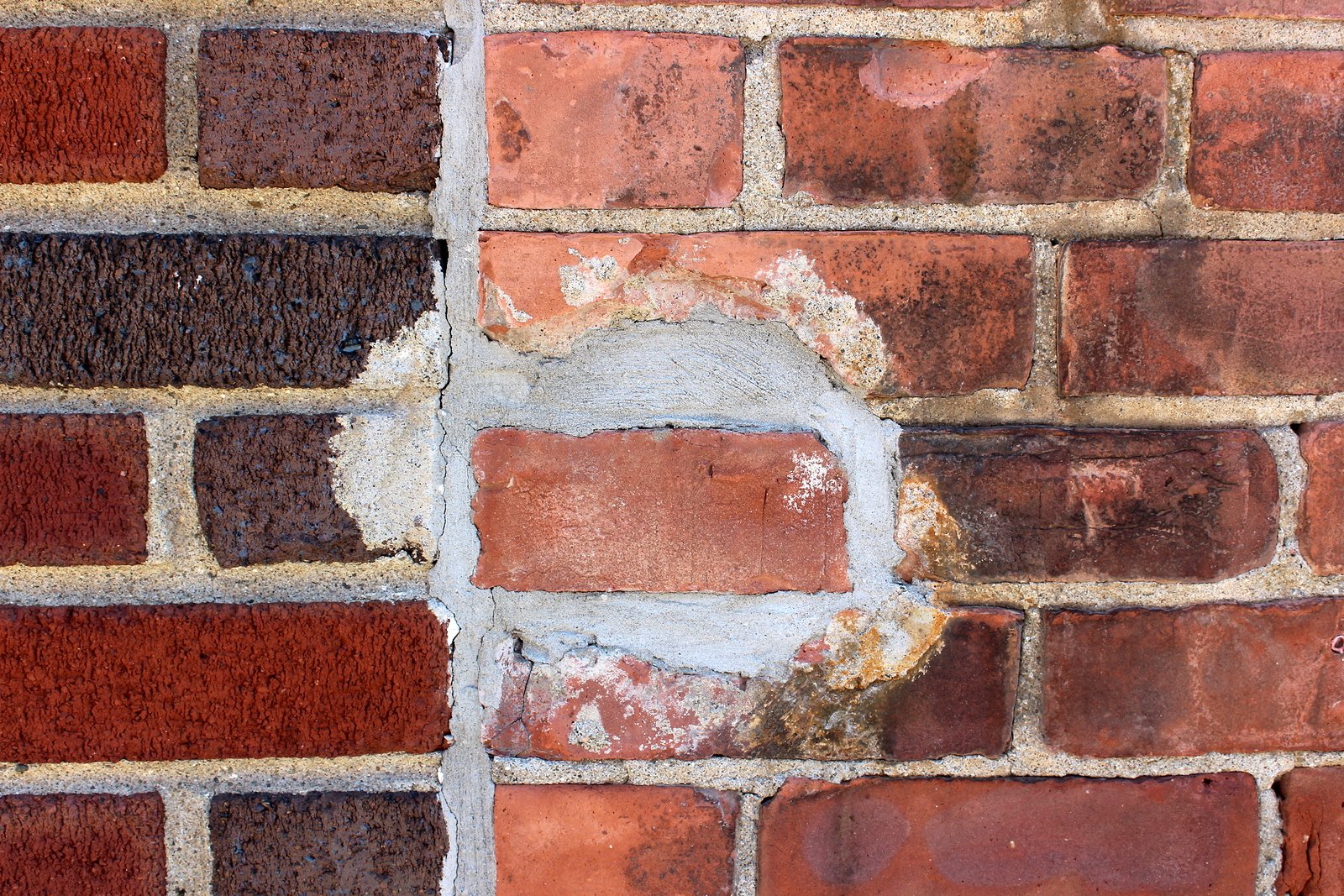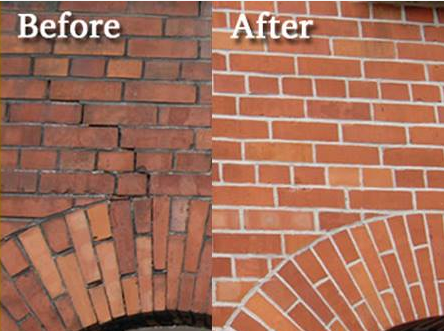Let loose the Possible of Your Property with Raul's Tuckpointing St. Louis MO
Let loose the Possible of Your Property with Raul's Tuckpointing St. Louis MO
Blog Article
Boost the Charm and Sturdiness of Your Brickwork With Tuckpointing
Brickwork has actually long been respected for its ageless charm and longevity. Over time, the mortar that holds those bricks with each other can deteriorate, leaving your structure prone to harm and detracting from its aesthetic appeal. However fear not, for there is a solution that can restore both the beauty and resilience of your brickwork: tuckpointing. This old-time method not only boosts the visual allure of your brickwork, but likewise reinforces its architectural honesty. Yet what specifically is tuckpointing and how does it differ from repointing? And just how can you make certain that your tuckpointed brickwork continues to be in pristine condition? In this discussion, we will certainly check out the essentials of tuckpointing, its advantages, the difference in between tuckpointing and repointing, the process itself, and the essential methods for preserving and caring for tuckpointed brickwork.
The Essentials of Tuckpointing
Tuckpointing is an experienced strategy made use of to repair and improve the appearance and architectural integrity of brickwork. It includes the procedure of eliminating deteriorated mortar joints and replacing them with fresh mortar. The term "tuckpointing" refers to the method of using 2 different colors of mortar to develop the impression of great joints, providing the brickwork an extra polished and visually pleasing appearance.
The very first step in tuckpointing is to thoroughly evaluate the problem of the brickwork. This entails checking the mortar joints for indicators of wear and tear, such as cracking, crumbling, or missing out on mortar. Once the issue locations have been identified, the old mortar is carefully eliminated using specialized tools, such as a mill or carve, while ensuring that the blocks themselves stay undamaged.
After the old mortar has actually been eliminated, the next step is to prepare the joints for fresh mortar. This generally entails cleansing out any type of debris or loose product and moistening the joints to guarantee correct attachment. A competent tuckpointer makes use of an aiming trowel to carefully fill the joints with fresh mortar, making sure to produce a consistent and flush surface area.
Advantages of Tuckpointing
Improving both the durability and appearance of brickwork, tuckpointing offers numerous remarkable advantages for home owners and property proprietors alike. By changing scrubby mortar joints, tuckpointing avoids moisture from seeping right into the brickwork, which can lead to architectural damage over time.
One more benefit of tuckpointing is its capacity to improve the aesthetic appeal of block structures. In time, mortar joints can become fractured, discolored, or stained, interfering with the total appearance of the brickwork. Tuckpointing involves carefully getting rid of the harmed mortar and replacing it with fresh mortar of a different color. This strategy enables for the creation of tidy, crisp lines that provide the illusion of properly maintained brickwork. It can likewise be used to produce decorative patterns or layouts, additionally enhancing the aesthetic charm of the framework (Raul's Tuckpointing St. Louis MO).
Along with boosting the long life and appearance of brickwork, tuckpointing can additionally enhance the worth of a building. Well-kept brickwork is viewed as a desirable function by possible buyers and can significantly enhance the visual charm of a residential property. When the time comes to put the building on the market., this can lead to a higher selling cost and a quicker sale.
Tuckpointing Vs. Repointing: What's the Distinction?

To differentiate between tuckpointing and repointing, it is very important to comprehend the essential differences in between these two techniques of brickwork remediation. While both techniques aim to keep the architectural honesty and visual charm of brickwork, they differ in their method and execution.
Tuckpointing is a thorough procedure that includes applying two various colors of mortar to create the illusion of great joints. This method is mainly used to enhance the aesthetic allure of brickwork by producing the appearance of well-maintained and well-crafted joints. The tinted mortar is very carefully applied and formed to match the shade and profile of the initial mortar, providing the impression of accuracy and craftsmanship.
On the other hand, repointing is an extra simple process that entails eliminating broken or tatty mortar from the joints and replacing it with fresh mortar. The main goal of repointing is to bring back the structural honesty of the brickwork by ensuring correct bonding and securing between the blocks. Unlike tuckpointing, repointing does not include using tinted mortar or the development of a decorative result.
The Process of Tuckpointing
The application of two various colors of mortar to develop the illusion of great joints is a precise procedure called tuckpointing. This strategy involves eliminating shabby mortar joints and changing them with brand-new mortar to improve the look and architectural stability of the brickwork. The procedure of tuckpointing can be divided into numerous steps.
First, the old mortar is very carefully gotten rid of using specialized devices such as knives and grinders. It is very important to remove the mortar to an enough depth to make sure a solid bond with the new mortar.
Next, the joints are completely cleansed to get rid of any debris or dirt. This aids to create a clean surface for the new mortar to follow.
As soon as the joints are cleaned, a thin layer of new mortar is put on the joint making use of a small pointing trowel. This initial layer, understood as the "aiming up" mortar, is generally the same color as the existing mortar.
After the preliminary layer has actually been used, a 2nd layer of mortar is used in addition to it. This second layer, called the "fillet" mortar, is a different shade and is meticulously formed to develop the impression of a great joint.

Keeping and Caring for Tuckpointed Brickwork
When the tuckpointing process is finished, correct upkeep and treatment are necessary to preserve the boosted appeal and resilience of the brickwork. This upkeep not just guarantees that the tuckpointed locations stay functional and intact yet likewise aids to stop any kind of prospective damages to the general framework.
One of the vital elements of keeping tuckpointed brickwork is regular cleaning. It is crucial to avoid utilizing any kind of harsh chemicals or rough devices that could potentially harm the mortar or the blocks themselves.
In addition to cleaning, it is very important to inspect the tuckpointed areas occasionally. This permits the early detection of any kind of indicators of degeneration or damages. Any kind of cracks, loose mortar, or indications of water damages need to be dealt with without delay to avoid additional damage.
Furthermore, guaranteeing appropriate water drainage around the brickwork is important. Water merging or inappropriate water drainage can lead to moisture penetration, which can damage the mortar and cause architectural damages. Cleaning seamless gutters and downspouts frequently and making sure that they are effectively routed far from the brickwork can assist stop these problems.
Last but not least, it is advised to talk to a specialist tuckpointing contractor for normal repair and maintenance. Their experience and experience can ensure that any kind of essential repair services are done properly, preserving the integrity and image source longevity of the tuckpointed brickwork.
Verdict
Finally, tuckpointing is a valuable strategy for improving the beauty and longevity of brickwork. It uses numerous advantages, such as enhancing the structural stability of the masonry and preventing dampness penetration. Tuckpointing entails the elimination and replacement of tatty mortar, leading to a uniform and tidy look. By correctly caring and preserving for tuckpointed brickwork, homeowners can guarantee its long life and remain to appreciate its aesthetic charm.
It includes the process of eliminating scrubby mortar joints and changing them with fresh mortar. Raul's Tuckpointing St. Louis MO.After the old mortar has actually been eliminated, the following step is to prepare the joints for fresh mortar. Tuckpointing includes very carefully getting rid of the damaged mortar and replacing it with fresh mortar of a different shade. The colored mortar is thoroughly used and formed to match the shade and profile try this site of the original mortar, providing the impact of accuracy and workmanship

Report this page